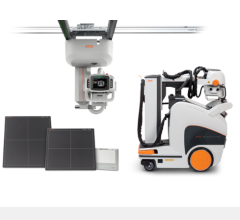
July 20, 2010 – InfraScan announced this week that it has signed a $2 million contract with the U.S. Marine Corps and Navy to develop a next-generation version of the company’s Infrascanner brain hematoma detector.
The Infrascanner is a small, portable device that can detect the presence and location of a brain hematoma based on differential near infrared light absorption of a hematoma and normal brain tissue. It is the first hand-held device designed to assist first responders and emergency room personnel in identifying life threatening brain hematomas and allowing expedient assessment of patients and facilitating crucial treatment.
InfraScan’s proposal was accepted in its entirety, in response to a proposal request by the Naval Health Research Center Broad Agency Announcement. The Small Business Innovation Research (SBIR) Commercialization Pilot Program contract transitions a successful SBIR Phase 2 project initiated by the Office of Naval Research into the hands of the eventual end users in the Marine Corps. The contract is focused on creating a portable device for detection of traumatic brain injuries in operational environments such as battlefields. Head wounds lead to nearly 50 percent of combat deaths.
In the battlefield setting, it is necessary to triage patients with severe injuries. Intracranial hematomas resulting from a traumatic brain injury are life-threatening and patient outcomes can improve significantly if treated within an hour after an injury – known as the “golden hour.” While most U.S. hospitals have a computer aided tomography (CAT) scanner, which is viewed as the state-of-the-art technology for diagnosing a brain hematoma, remote battlefields and many facilities lack the neurosurgical capabilities to treat the condition. The early identification of a brain hematoma can play a significant role in facilitating transportation of critically injured patients to facilities, which can both verify Infrascanner’s early screening and offer surgical intervention.
For more information: www.infrascanner.com


 January 08, 2026
January 08, 2026 









